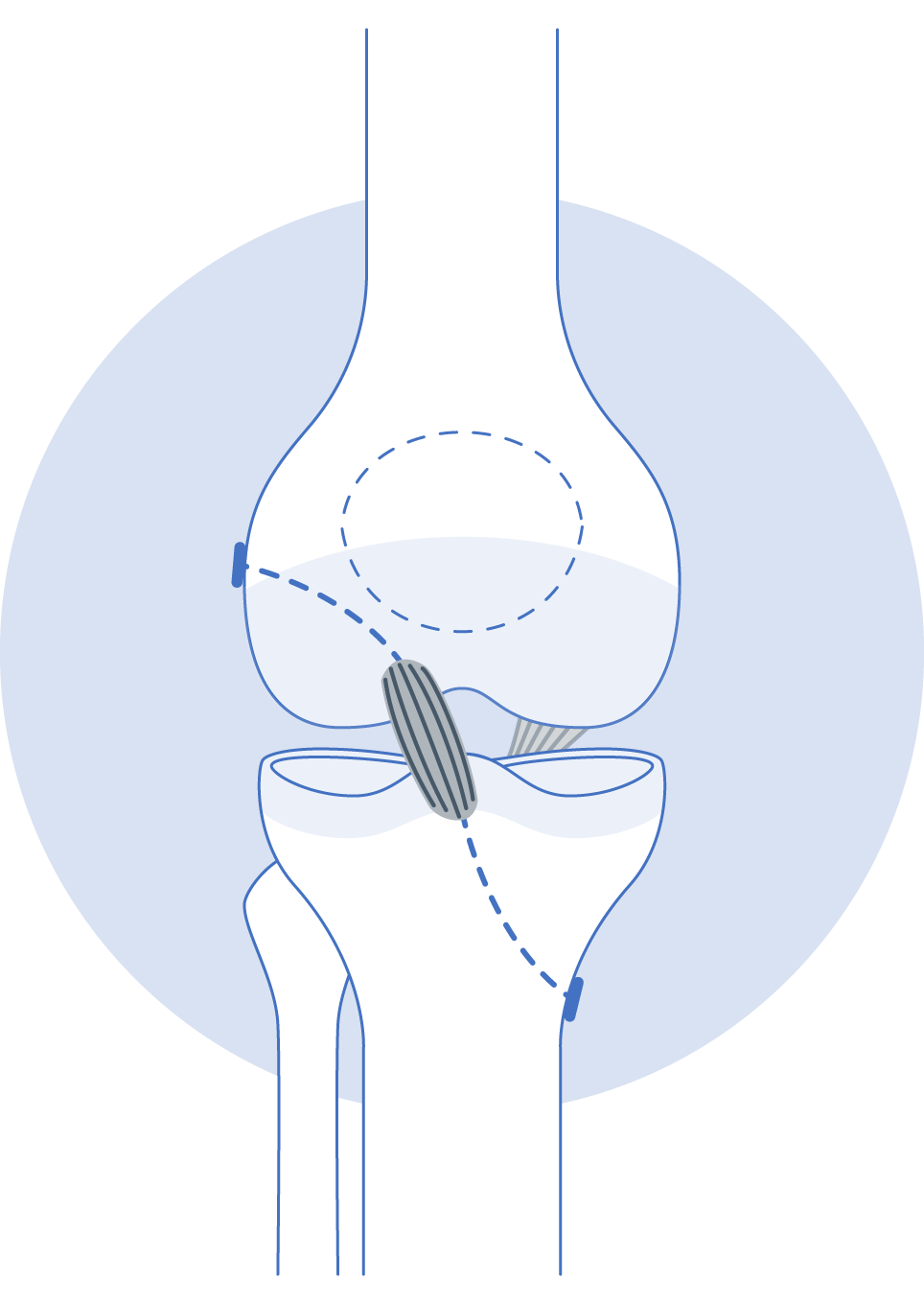


ACL RECONSTRUCTION SURGERY
- I have a specialist interest in ACL injuries and their treatment. My surgical technique allows a rapid and accelerated rehabilitation programme. I have published a number of key research areas helping athletes return to sport successfully.
- Surgery is an important part of the process but the pre-operative optimisation and post-operative rehabilitation and the team that surround you are also vital.
Surgical steps
- The damaged intra-articular ACL is removed and reconstructed with a graft.
- This is combined with a knee arthroscopy to guide the procedure and allow any other associated injuries in the knee to be treated at the same time, such as meniscal or cartilage damage
- The graft is made by taking a section of tissue from around the knee, most commonly a hamstring tendon from the back inside of the knee or a strip of patella tendon from the front
- My primary graft is a 4-strand semi-tendinosis hamstring graft that is pre-tensioned. It is a short stiff graft that has less chance of stretching over time
- Bone sockets hold the intra-articular graft in place with a 360 degree bone contact for healing.
- The graft is tensioned within the sockets using adjustable suspension with permanent buttons that sit snug onto the outside of the bone.
- The graft is tensioned in the position of your normal knee extension (or hyper-extension) so there will be no issues achieving this range of motion post-op
- The knee is meticulously washed out as even a tiny retained bone fragment from can cause inflammation and prolonged knee swelling
- This may need to be combined with a second reconstruction on the outside of the knee for added control of knee stability
- I use tranexamic acid (TXA), a medication proven to reduce swelling
Rehabilitation
- My surgical technique allows rapid rehabilitation with very few significant restrictions. No brace. Crutches for comfort only.
- The early aims are to minimise swelling, regain early full range of knee motion, and prevent any muscle loss.
- Swelling can be a major issue so regular high elevation, cryotherapy (icing), and lower-leg muscle activation is required
- I work with the best local physiotherapists and allow rehabilitation that is accelerated and matched to your performance levels
- See the ACL REHAB section!
- Review my insights in a talk on this subject uploaded in the BLOG
Other knee ligament repairs and reconstructions
- Whilst the ACL is the most commonly injured knee ligament that requires surgery, there are 3 other main regions of the knee that can sustain ligament injuries:
- Medial collateral ligament (MCL)
- Lateral collateral ligament (LCL) and the posterolateral corner (PLC)
- Posterior cruciate ligament (PCL)
- These ligaments can be injured individually or in combined multi-ligament injuries where each individual case has a tailor-made approach to repairing and reconstructing the knee
REVISION ACL RECONSTRUCTION
- I am often sent referrals where a previous ACL reconstruction has failed, and asked to perform a revision or ‘re-do’ procedure
- There can be a number of reasons for a ruptured graft such as a return to sport too early, a failure to provide an environment for graft healing and integration, graft malpositioning, or simply another episode of sufficient force during sport
- It is vital that the revision reconstruction learns from any previous mistakes and that the surgery provides maximum stability to allow bespoke physiotherapy
- 3D imaging and weight-bearing full leg x-rays will help guide my surgery where I often offer different graft choices and always add in a lateral tenodesis
- Post-op physiotherapy can often be the same fast protocols as seen in primary ACL reconstruction
- A slope changing osteotomy; where there is ACL deficiency or a failed ACL reconstruction due to an increase in the slope at the top of the tibia. The increased postrior slope puts more pressure on the ACL
